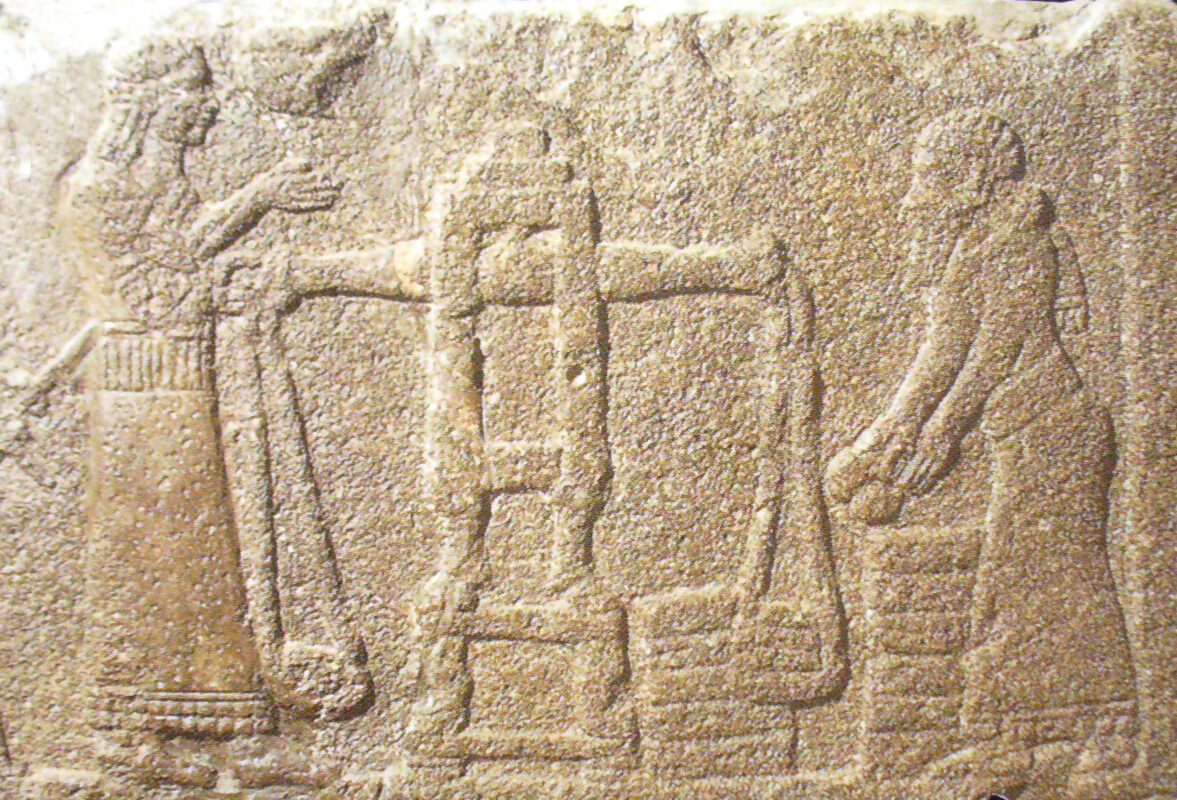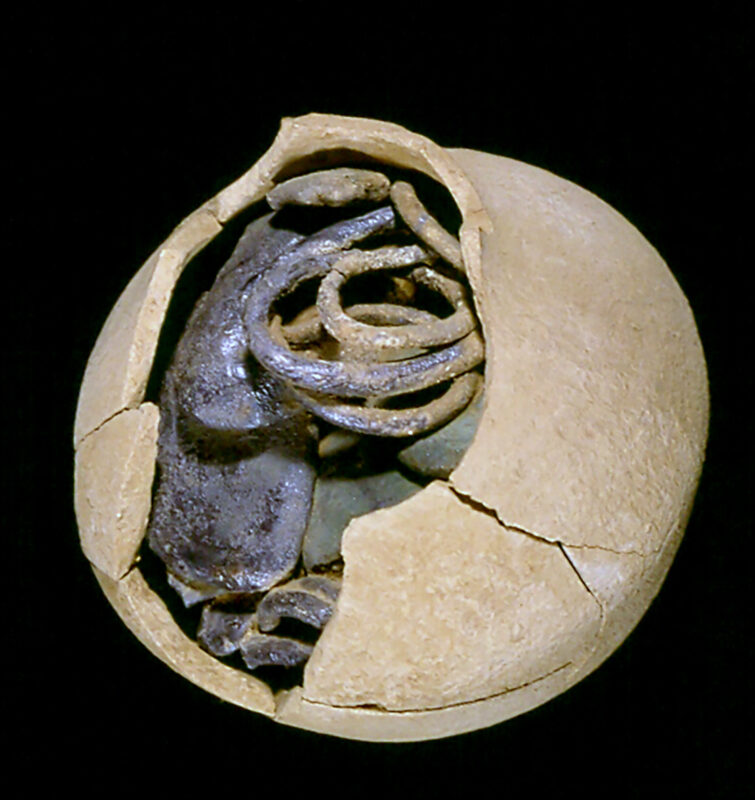SCANE – Silver Circulation in the Ancient Near East
A research project investigating the role of silver in ancient Near Eastern economies during the Bronze Age. An interdisciplinary team of Italian archaeologists, numismatists, Assyriologists and economists coordinated by Luca Peyronel is analysing silver hoards and silver objects, to be managed in an open-source and open-access database. Development of a comprehensive vocabulary for silver terminology in the various texts is planned in order to cross-check archaeological and epigraphic information.
Silver Hoards
Hoards of objects and pieces of silver dating to the mid-3rd millennium BC onwards are found in Mesopotamia, in both public and private contexts. These hoards may contain just silver, or there may also be other precious objects, or instruments used for craftwork and economic administrative activities such as scale weights, seals, cretulae and tablets. Silver has been found in the form of various types of ingot, rings, spirals – intact or broken, plates, and recycled fragments. Silver hoards reveal that this precious metal circulated from southern Levant to Anatolia, and from Mesopotamia to Iran and the Persian Gulf over a wide timespan, up to the introduction of coinage (6th century BC), when hoards containing pieces of silver, coins and broken coins were still deposited.
Statistical studies of the masses of the pieces of silver in several hoards have shown significant repetitions of certain weight values in line with contemporary metrological systems, suggesting that the metal was divided into lumps of standard weight – and therefore value. Weighed silver, as an economic and financial instrument accepted throughout the Near East, easily transportable and with a convenient value: weight ratio, was thus also the preferred tool for circulation in the form of readily convertible weight units adopted by the various economic and administrative systems.
The project’s aim is to create a digital archive of all the Bronze Age silver hoards recorded in the Near East, containing quantitative and qualitative data regarding the artefacts, together with information on the discovery contexts and association with other objects.
Silver in Cuneiform Sources
Mesopotamian written sources indicate that since at least the mid-3rd millennium BC onwards, silver (Sumerian kù-babbar; Accadian kaspu) was adopted as the standard of value and of equivalence between portable and non-portable goods, involving weighing procedures to verify transactions.
Bronze Age cuneiform sources exhibit a rather varied terminology in relation to the quality and forms in which the metal circulated and was exchanged. Third millennium documentation from Ebla (c. 2400-2300 BC) attests to the employment of silver artefacts of standardized shapes and weights (discs, pottery, bracelets, ornaments, weapons) in a ceremonial gift circuit. Texts from the palace of Mari and those of the Assyrian merchants of Kanesh (Middle Bronze Age, c. 2000-1750 BC) refer to silver in the form of discs, plates, ingots, rings and spirals, as well as the exchange of silver and gold vases (GAL/kâsum). Of particular importance are mentions during the 3rd dynasty of Ur and in the Palaeo-Babylonian period of silver rings (HAR/šewirum), bestowed by the central administration upon high officials and members of the court on special occasions. Late Bronze Age letters relating to diplomatic relations between Near Eastern kingdoms and Egypt show a contrast between a trading-type circuit in which is silver referred to by weight and a gift exchange circuit featuring luxury items in silver and gold.
These records are extensive but diverse, and their correct evaluation calls for careful and critical examination. One of the project’s main objectives is therefore a comparative analysis of the textual documentation dating to the 3rd and 2nd millennia BC, in order to quantify the circulation of silver in Near Eastern economies during the Bronze Age, define the various terminological aspects relating to the processing of this precious metal, and investigate its social and ideological role and significance.
Publications
2019 – Peyronel, L.: Weighing Silver on the scales. An overview of silver hoards and balance weights during the Middle Bronze Age in the Near East, in L. Rahmstorf and E. Statford (eds.), Weights and Marketplaces from the Bronze Age to the Early Modern Period. Proceedings of Two Workshops Funded by the European Research Council (ERC), Göttingen: 67-86.
2018 – Peyronel, L: L’economia del Vicino Oriente antico tra evidenze epigrafiche e dati archeologici. Un progetto interdisciplinare per lo studio dell’argento come mezzo di scambio nell’età del Bronzo, in M. Betrò, S. de Martino, G. Miniaci, F. Pinnock (a cura di), Egitto e Vicino Oriente antichi: tra passato e futuro. Studi e ricerche sull’Egitto e Vicino Oriente in Italia. I Convegno Nazionale Pisa 5-6 giugno 2017, Pisa: 219-226.
2018 – Ialongo, N. – Vacca, A.- Peyronel, L.: Breaking Down the Bullion. The Compliance of Bullion-Currencies with Official Weight Systems in a Case-Study from the Ancient Near East, Journal of Archaeological Science 91: 20-32.
2014 – Peyronel, L.: Between the Archaic Market and Gift Exchange: The Role of Silver in the Embedded Economies of the Ancient Near East during the Bronze Age, in F. Carlà – M. Gori (eds.), Gift Giving and the ‘Embedded’ Economies in the Ancient World, Heidelberg: 355-376.
2010 – Peyronel, L.: Ancient Near Eastern Economics: The Silver Question between Methodology and Archaeological Data, in P. Matthiae et al. (eds.), Proceedings of the 6th International Congress on the Archaeology of the Ancient Near East, May, 5th-10th 2008, “Sapienza” – Università di Roma. Volume 1, Wiesbaden, 2010: 925-948.






